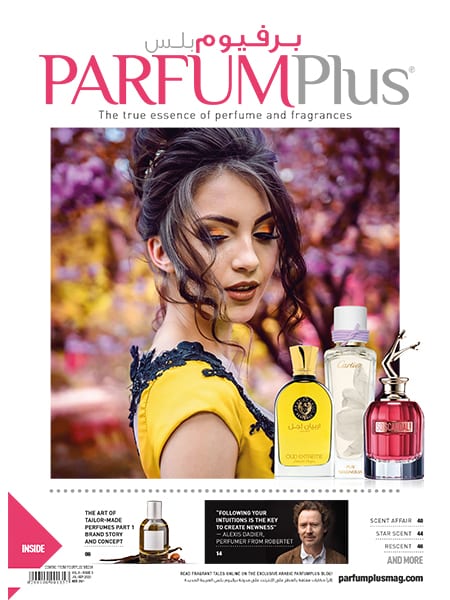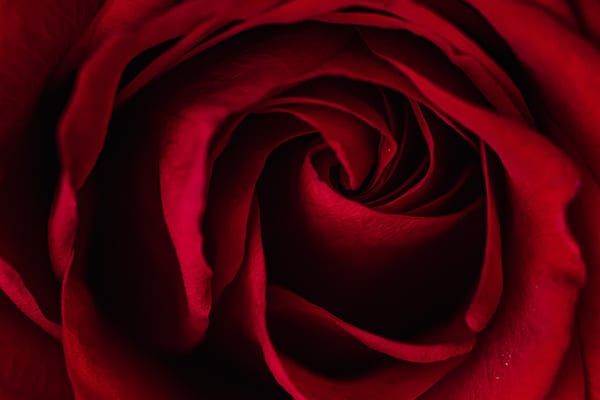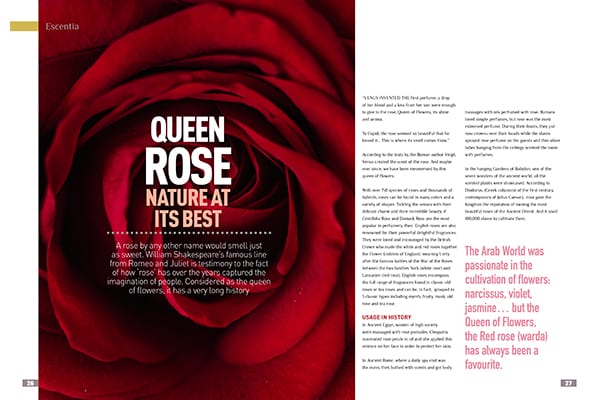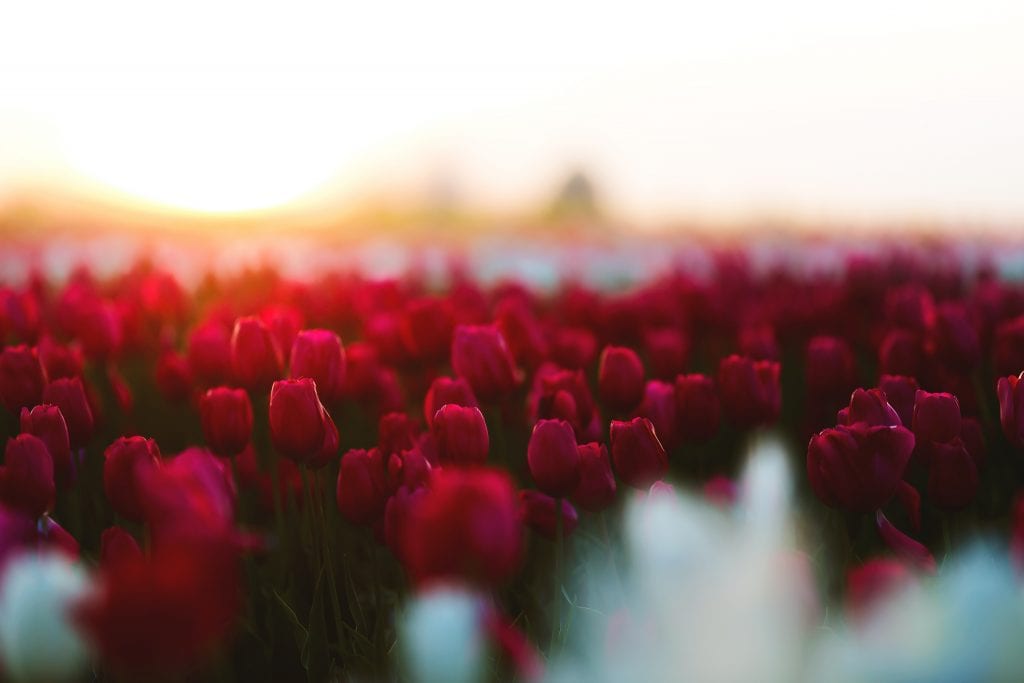
Queen Rose Nature At Its Best
A rose by any other name would smell just as sweet. William Shakespeare’s famous line from Romeo and Juliet is testimony to the fact of how ‘rose’ has over the years captured the imagination of people. Considered as the queen of flowers, it has a very long history
“Venus invented the first perfume; a drop of her blood and a kiss from her son were enough to give to the rose, Queen of Flowers, its shine and aroma.
To Cupid, the rose seemed so beautiful that he kissed it... This is where its smell comes from.”
According to the texts by the Roman author Virgil, Venus created the scent of the rose. And maybe ever since, we have been mesmerised by this queen of flowers.
With over 150 species of roses and thousands of hybrids, roses can be found in many colors and a variety of shapes. Tickling the senses with their delicate charm and their incredible beauty, if Centifolia Rose and Damask Rose are the most popular in perfumery, then English roses are also renowned for their powerful delightful fragrances. They were loved and encouraged by the British Crown who made the white and red roses together the Flower Emblem of England, meaning Unity after the famous battles of the War of the Roses between the two families York (white rose) and Lancaster (red rose). English roses encompass the full range of fragrances found in classic old roses or tea roses and can be, in fact, grouped in 5 classic types including myrrh, fruity, musk, old rose and tea rose.
Usage in History
In Ancient Egypt, women of high society were massaged with rose pomades. Cleopatra macerated rose petals in oil and she applied this mixture on her face in order to protect her skin.
In Ancient Rome, where a daily spa visit was the norm, they bathed with scents and got body massages with oils perfumed with rose. Romans loved simple perfumes, but rose was the most esteemed perfume. During their feasts, they put rose crowns over their heads while the slaves sprayed rose perfume on the guests and thin silver tubes hanging from the ceilings scented the room with perfumes.
In the hanging Gardens of Babylon, one of the seven wonders of the ancient world, all the scented plants were showcased. According to Diodorus, (Greek columnist of the first century, contemporary of Julius Caesar), rose gave the Kingdom the reputation of owning the most beautiful roses of the Ancient Orient. And it used 100,000 slaves to cultivate them.
The Arab World was passionate in the cultivation of flowers: narcissus, violet, jasmine… but the Queen of Flowers, the Red rose (warda) has always been a favourite. A symbol of wealth in its velvet robe, it represented voluptuousness and exquisite beauty. Marasha (sprinklers) were kept close at hand, as a token of hospitality to welcome guests. Vials were filled with rosewater to be sprinkled on the head, face, neck and hands of guests.
In India, statues of gods are washed with rosewater presented in beautiful containers and grounds are covered with rose petals during religious ceremonies.
In China, thanks to Arabian influences during the trade exchanges during the T’ang era (618- 907 a.d.), rose and jasmine found their way to the pleasures of the tea ceremony. Rose or jasmine petals are used to delicately perfume the tea, even today.
Does Rose Still Smell Sweet Today?
Unfortunately these days, perfumes seem to have lost their flowers and cut flowers have lost their scents. Humans did not find the way to reproduce nature perfectly as no super technology and no chromatograph can detect all the molecules contained in plants. Therefore they decided to synthesize them and instead of reproducing the full rose they created and assembled 3 molecules forming a scent of rose only, without considering the beneficial power of the whole rose.
It’s the same story with cut flowers. They have been genetically modified to have no scent and have a longer life in the vase. History may tell us about the healing properties or rose but you cannot find this in the synthetic rose molecules. They offer you the scent of a rose, not the powerful healing property of a rose.
Amazing & Powerful: Natural Roses
The beauty of a real rose is not only in its shape or its color; it is also in the diversity of their scent. There are so many different roses and a multitude of different perfumes.
The expression of the fragrance also varies in intensity and composition. And this ‘olfactory landscape’ is ever changing, every moment. This will change depending on the state of the pink button, open flower, flower in full bloom, also in different times of evolution in daytime. The rose, like any living organism seems to have an internal clock with internal differentiated cycles.
Rose, like any other flower, will not express its fragrance in the same way at different times of the day, in terms of intensity and structure. In fact, it’s the same way for any perfume put on one’s skin or body.
A renowned English Certified Natural Perfumer, Rosemary Moore, who specialises in rose essences, has an interesting perspective to her discovery of the beautiful and deep natural rose essences.
“History and spirituality inspire the Rose Perfumes I create. They are often made at specific times in the ancient calendar. My Triple Rose Perfume, Rosa Alba, Rosa Damask and Rosa Centifolia was on the Spring Equinox 3 years ago, a time of new beginnings.
It is not only a perfume but you breathe in its fragrance to support and uplift the mind, body and soul of those who are drawn to it, inspired while living in Glastonbury the summered land, known as the Heart Center of the world and the sacred healing springs of the red and white flowing of the Chalice Well Garden.
This is where my connection with Roses started. Since then I have felt it’s been my path to take the fragrance of these roses out into the world for nurturing our souls.”
Creezy Courtoy: New Luxury Expert, Perfume Historian, Anthropologist, Author, Consultant, Founder and Chair International Perfume Foundation







